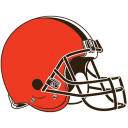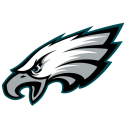How to spot breast cancer: Strictly star Amy Dowden diagnosed with deadly disease at 32

Strictly Come Dancing star Amy Dowden has revealed she has been diagnosed with grade 3 breast cancer, at the age of 32.
The Welsh professional dancer first joined the hit BBC show in 2017 and quickly became a fan favourite. She is unsure if she will return for the next series.
Amy said she felt a lump in her breast the day before she flew to the Maldives for her honeymoon. When she returned home, she called the GP before she got an emergency referral.
Opening up about her diagnosis in an interview with Hello! magazine, she said: “I’ve been through quite a lot in my life and this is another hurdle. But if I’m positive and strong, I’ve got a really good chance of getting back out on the dancefloor as soon as possible.”
Sadly, she is no stranger to this form of cancer as her mum also had it.
“You just don’t ever think it’s going to happen to you,” she said. “I hadn’t thought it was possible to get breast cancer at my age.”
According to Breast Cancer UK, the disease is the most common form of cancer in the UK, and the most common cancer in women globally.
Although 80 per cent of breast cancers occur in women over the age of 50, the earlier you get into the habit of checking for abnormalities, the better. Anyone can get breast cancer, although it is much more prevalent in women.
With the help of Luke Powles, the associate clinical director of Bupa Health Clinics, we have put together a guide to checking your breasts.
This includes what to look out for and what actions to take, should you find anything that gives you cause for concern.
How to check your breasts
When you are checking your breasts, look at the size and shape of each one and check for lumps. Make sure you check your nipples and the skin on your breasts. Check each area for any pain when you’re touching them, too. You might notice that your breasts feel different at different times of the month; it’s a good idea to become familiar with what’s normal for you during these times, so you can spot anything unusual.
What to look out for
A change in the size or shape of your breast
A change in the look or feel of your skin
A new lump, thickening, or bumpy area in one breast or armpit
Discharge or bleeding from your nipple
Any new discomfort or pain in one breast that doesn't go away
How often should I be checking my breasts?
Try to get into the habit of checking your breasts regularly – as a general guide, aim for at least once a month. Find a suitable time that works for you; perhaps it’s after you’ve had a bath, when you’re getting dressed, or when you’re settling down for the evening.
It is also important to be aware of what’s normal for you and your body. You should be mindful that your breasts will change during your monthly cycle, pregnancy, and menopause.
How early should you start checking for lumps?
While there’s no specific age you should start checking your breasts, checking them from an early age will help you to become more aware of how they usually look and feel, and to help you spot any changes.
If you’re a woman over 50, you will be invited for a breast screening (mammogram). If you’re a trans man, trans woman, or are non-binary, you may be invited automatically, or you may need to talk to your GP or call the local breast-screening service to ask for an appointment.You’re offered this screening every three years until you’re 70. You should still be checking your breasts regularly – a breast screening shouldn’t replace your regular breast checks.
What should you do if you find a lump?
If you notice a lump in your breast, it’s really important to get this checked by your doctor. A lump or change to the feel or appearance of your breasts should never be ignored. While it may not be anything serious, it can help put your mind at ease to speak to your doctor about any changes you spot.
Are there any breast abnormalities to look out for that may not be cancer?
Your breasts will change naturally each month and as you get older, and they may feel tender, heavy, or lumpy at the end of your monthly cycle. These changes should normalise once your period starts. It’s easier to check your breasts regularly outside of your monthly cycle.
If you're pregnant, your breasts will change while your baby is developing to get ready for breastfeeding, which means they may get bigger and feel sore and tender. When you reach menopause, the amount of glandular tissue in your breasts reduces, because of the changes to your hormones. This can make your breasts feel different, and some women find they’re softer and less firm.
It’s really important that, when you’re checking your breasts (make sure you’re checking the whole of your breast area), you are looking for any changes that feel different. It’s best to speak to your GP about anything you’re feeling unsure, worried, or anxious about – as they’ll be able to help you.
You can find out more information or book a breast health check with Bupa.

 Yahoo Sport
Yahoo Sport 




































